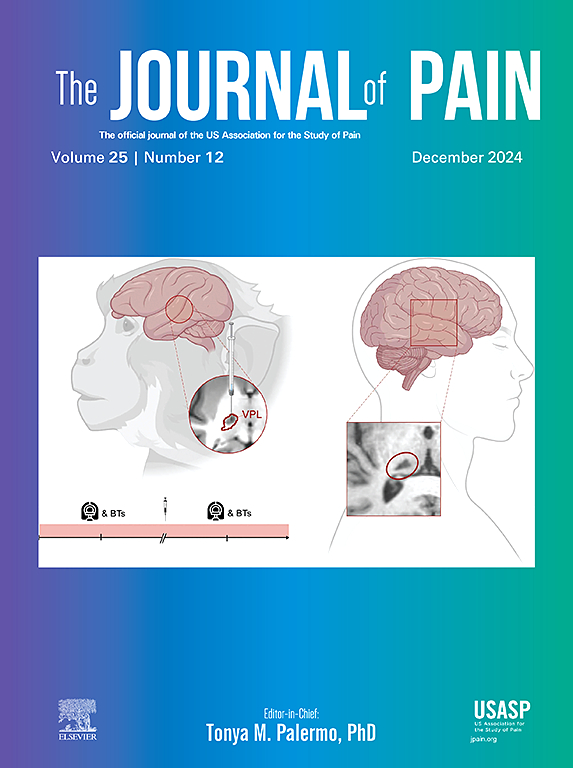The role and treatment potential of the complement pathway in chronic pain
IF 4
2区 医学
Q1 CLINICAL NEUROLOGY
引用次数: 0
Abstract
The role of the complement system in pain syndromes has garnered attention on the back of preclinical and clinical evidence supporting its potential as a target for new analgesic pharmacotherapies. Of the components that make up the complement system, component 5a (C5a) and component 3a (C3a) are most strongly and consistently associated with pain. Receptors for C5a are widely found in immune resident cells (microglia, astrocytes, sensory neuron-associated macrophages (sNAMs)) in the central nervous system (CNS) as well as hematogenous immune cells (mast cells, macrophages, T-lymphocytes, etc.). When active, as is often observed in chronic pain conditions, these cells produce various inflammatory mediators including pro-inflammatory cytokines. These events can trigger nervous tissue inflammation (neuroinflammation) which coexists with and potentially maintains peripheral and central sensitization. C5a has a likely critical role in initiating this process highlighting its potential as a promising non-opioid target for treating pain. This review summarizes the most up-to-date research on the role of the complement system in pain with emphasis on the C5 pathway in peripheral tissue, dorsal root ganglia (DRG) and the CNS, and explores advances in complement-targeted drug development and sex differences. A perspective on the optimal application of different C5a inhibitors for different types (e.g., neuropathic, post-surgical and chemotherapy-induced pain, osteoarthritis pain) and stages (e.g., acute, subacute, chronic) of pain is also provided to help guide future clinical trials.
Perspective
This review highlights the role and mechanisms of complement components and their receptors in physiological and pathological pain. The potential of complement-targeted therapeutics for the treatment of chronic pain is also explored with a focus on C5a inhibitors to help guide future clinical trials.
补体途径在慢性疼痛中的作用和治疗潜力。
临床前和临床证据表明,补体系统有可能成为新型镇痛药物疗法的靶点,因此补体系统在疼痛综合征中的作用备受关注。在构成补体系统的成分中,5a 组分(C5a)和 3a 组分(C3a)与疼痛的关系最为密切和一致。C5a 受体广泛存在于中枢神经系统(CNS)的免疫常驻细胞(小胶质细胞、星形胶质细胞、感觉神经元相关巨噬细胞(sNAMs))以及血源性免疫细胞(肥大细胞、巨噬细胞、T 淋巴细胞等)中。当这些细胞活跃时(如在慢性疼痛病症中经常观察到的那样),会产生各种炎症介质,包括促炎症细胞因子。这些活动会引发神经组织炎症(神经炎症),与外周和中枢敏化共存,并可能维持这种敏化。C5a 在启动这一过程中可能起着至关重要的作用,这凸显了它作为治疗疼痛的非阿片类药物靶点的潜力。本综述总结了关于补体系统在疼痛中作用的最新研究,重点是外周组织、背根神经节(DRG)和中枢神经系统中的 C5 通路,并探讨了补体靶向药物开发的进展和性别差异。此外,还介绍了不同类型疼痛(如神经病理性疼痛、手术和化疗后引起的疼痛、骨关节炎疼痛)和不同阶段疼痛(如急性、亚急性、慢性)的不同 C5a 抑制剂的最佳应用,以帮助指导未来的临床试验。观点:本综述强调了补体成分及其受体在生理性和病理性疼痛中的作用和机制。此外,还探讨了补体靶向疗法治疗慢性疼痛的潜力,重点关注C5a抑制剂,以帮助指导未来的临床试验。
本文章由计算机程序翻译,如有差异,请以英文原文为准。
求助全文
约1分钟内获得全文
求助全文
来源期刊

Journal of Pain
医学-临床神经学
CiteScore
6.30
自引率
7.50%
发文量
441
审稿时长
42 days
期刊介绍:
The Journal of Pain publishes original articles related to all aspects of pain, including clinical and basic research, patient care, education, and health policy. Articles selected for publication in the Journal are most commonly reports of original clinical research or reports of original basic research. In addition, invited critical reviews, including meta analyses of drugs for pain management, invited commentaries on reviews, and exceptional case studies are published in the Journal. The mission of the Journal is to improve the care of patients in pain by providing a forum for clinical researchers, basic scientists, clinicians, and other health professionals to publish original research.
 求助内容:
求助内容: 应助结果提醒方式:
应助结果提醒方式:


